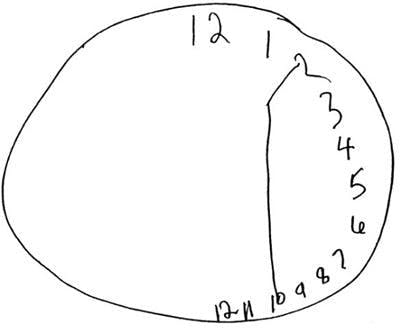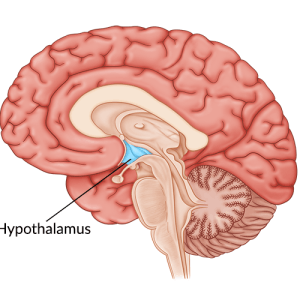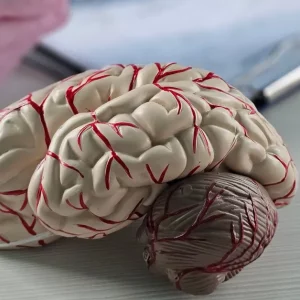Left neglect (a type of hemispatial neglect) refers to a disorder of attention that causes a person to have difficulty noticing, attending to, and responding to stimuli on the left side of their body. It typically occurs after damage to the brain’s right hemisphere.
True hemispatial neglect occurs most commonly in the left visuospatial field, while a similar condition on the other side is typically classified as “right inattention” vs. a true neglect (more details on this below).
Patients with neglect or inattention after brain injury might leave one side of their plate untouched during meals or might bump into objects on their affected side.
These actions are unintentional, but they can have serious consequences for a person’s safety.
To help you better understand this condition, you’re about to learn the causes, symptoms, and treatments for neglect after brain injury. At the end of this article, you’ll also find exercises you can do at home to combat neglect.
Causes of Hemispatial Neglect After Brain Injury
Hemispatial neglect, also known as unilateral neglect or hemineglect, is a sensory awareness problem caused by damage to the parietal lobe. In particular, it is associated with lesions on the posterior parietal cortex.
The parietal lobe helps you process sensory information from the outside world. If it becomes damaged, you may lose the ability to sense objects and people on one side. Doctors call this condition hemineglect.
Hemineglect impairs attention to contralesional stimulus. This means the person cannot detect objects or sounds on the opposite side that their brain injury occurred.
That’s because each hemisphere of the brain controls the opposite side of the body. Therefore, if you damage the right hemisphere, your left side will be affected.
Why Left Neglect is More Common
Interestingly, left-side neglect is far more common than right-side neglect.
One popular explanation for this suggests that the right parietal lobe attends to space on both sides of the body, while the left side only attends to the right. Therefore, when the right side is damaged, the loss is much more noticeable.
In other words, because the right hemisphere processes both sides of the body, it can compensate for damage to the left hemisphere. But if the right hemisphere is damaged, the left side cannot fill in the gaps.
As complicated as this all sounds, the important thing to remember is that neglect appears on the opposite side that the brain damage occurred.
Symptoms of Left-Side Neglect

Neglect most often impairs the person’s left visuospatial field. If severe, it can cause them to act as though the left side of a space does not exist.
Other signs that someone is suffering from left neglect include:
- Eating only from the right side of their plate
- Brushing only the right side of their hair
- Bumping into objects on their left
- Ignoring people speaking from their left side
- Constantly or frequently having their head and eyes turned to the right, with cues needed to turn their head to the left
Neglect doesn’t only affect a person’s interaction with the left side of their environment, however. It also changes the way space is represented in the brain.
In a famous experiment on visual neglect, patients who were familiar with the Piazza del Duomo square in Italy were asked to imagine themselves standing at one end of the square, facing away from the cathedral.
When told to describe the square from memory, patients could only name shops and landmarks that would have been on their right side. They couldn’t recall anything that should have been on their left.
The researchers then asked the patients to imagine the plaza from the opposite end, looking towards the cathedral. This time, when they described what they remembered, the landmarks they mentioned were the ones on the other, previously neglected, side, which was now to their right.
In other words, the patients knew the entire square by memory, but they couldn’t access all of it at once. They could only “see” or imagine the parts that would have been on their right.
This experiment shows that neglect is not a problem with the person’s actual vision, but with the brain’s ability to process and attend to the left side.
Types of Hemineglect After Brain Injury

Visual neglect is the most common type of neglect after brain injury, but hemineglect can also manifest in other ways, including:
- Motor neglect, which causes a person to rarely move the neglected half of their body, even though they have the ability to.
- Auditory neglect makes it difficult to process sounds coming from the neglected side.
- Tactile neglect refers to the inability to feel anything on the neglected side.
Some forms of neglect are less disabling than others. For example, patients with mild neglect can still detect objects on their neglected side as long as there is nothing else competing for their attention. This condition is called visual extinction.
Severe left neglect, on the other hand, can cause a person to deny that their left arm is part of their body.
Before treating hemineglect, it is crucial to work with an occupational or physical therapist to get an accurate diagnosis.
Diagnosing Left-Side Neglect
Doctors and therapists employ a variety of tests to diagnose left-side neglect.
Perhaps the most popular test is the clock-drawing test. If a person has hemineglect after their brain injury, they may draw all the numbers of a clock on one side, like this:

Other tests can involve reading, where the patient only reads the right half of a word or sentence. For example, if they are shown the word “parrot” they may only read “rot.”
However, during this (and other) tests, people may confuse left-side neglect with left visual field cuts (i.e. hemianopsia), where the patient truly cannot see things on their left side. However, while they may present similarly, the two are separate conditions that require different treatments.
With left-side neglect, the brain is still receiving external input, it just cannot process or attend to it. With hemianopsia though, the visual pathways themselves are damaged, meaning the brain does not receive any signals and therefore cannot see things on the left side.
Both still cause problems with the left side, but a person with visual field loss can typically tell something is wrong, and will usually compensate by moving their head around. A person with left neglect often doesn’t even realize they have a problem.
Once a diagnosis is made, the doctors will suggest different treatment options, depending on how severe the person’s neglect is.
Treating Left Neglect After Brain Injury
Treatment for hemineglect will consist of finding ways to bring the person’s attention to their left side. There are several methods therapists use to accomplish this, some with more success than others.
The hardest part of treating hemineglect, however, is getting the person to recognize their deficit. This problem, known as anosognosia, is common in left-side neglect patients.
Since the person is usually not aware that their left side exists, it can be difficult for them to believe that they are not recognizing it. Some may even come up with elaborate excuses for why they accidentally bumped into a table they didn’t notice.
In these cases, the best approach is to have the person engage in consistent therapy (likely physical, occupational, and speech therapy), where the therapists will provide cueing and strategies to improve attention to the left side. Additionally, it can be helpful to take the person to a neuropsychologist, who can assess them and help them learn to accept their condition.
Once they can recognize their neglect, they will likely start to see more improvements in their therapies.
Best Treatments for Left Neglect
The most effective treatments for left-side neglect include:
- Visual scanning training. This therapy aims to improve left-side neglect by encouraging patients to consciously pay attention to their left. This could start as simply as training the patient to turn their head to the left, and then will progress in difficulty from there (i.e. looking for particular objects on the left, etc.). The tasks usually start at a few degrees past midline and work out from there. It is most effective when combined with neck muscle vibration.
- Neck muscle vibration. This treatment involves stimulating the neck muscles on the neglected side to increase awareness of that side.
- Prismatic adaptation. During this treatment, the patient wears special prismatic glasses that shift the visual field to the right, forcing the person to look towards their left side in order to reach an object. This therapy works best when combined with visual scanning training.
- Constraint-induced movement therapy. For patients with left-side motor neglect, strapping down the right arm will force them to use their neglected arm, assuming they have at least some motor control remaining there. This will help them gain more awareness of their left side in general.
- Eye patching. Another form of constraint-induced movement therapy – this technique involves putting a patch over the “good” eye to force the use of the left eye. Or, some therapists will block the right side of both eyes (using clear glasses or the patients own glasses). This encourages the patient to move their eyes towards the left.
- Trunk rotation. This therapy uses trunk stabilization exercises to help rotate the body and gain more awareness of the left side.
Of these treatments, visual scanning exercises combined with neck muscle vibration show the most promise. In the next section, we’ll show you how to do some of these exercises yourself at home.
Visual Scanning Exercises for Left Neglect

The following are a few activities you can do to help the person improve awareness of their neglected side.
- Anchoring techniques for reading tasks. Put a bright line or piece of colored tape on the left side of book pages to act as the “anchor”. Cue the person to move their eyes all the way to the left until they see the “anchor”, which is where they will begin reading. This will help them ensure they are seeing the whole page, as opposed to just the right side. You can also add Velcro or sandpaper to the pages left margin for them to feel for, if they have trouble seeing the tape.
- Navigation tasks. Going for a walk or moving around in their wheelchair can be a great way to improve visual neglect. Try walking on their left side and encouraging them to look towards you, or have the patient describe objects on their left. You can also put numbered sticky notes on both hallway walls and have the person find them in order.
- Letter hunting. Print out a word search game and have the person hunt for specific letters on their left and right side. If they struggle with this, you can mark the letters with a highlighter. Encourage the person to keep looking until they have found them all.
These are just a few examples of the type of scanning exercises that can improve left-side neglect. Talk to your occupational therapist for even more ideas.
Living with Left Neglect After Brain Injury
Hemineglect can cause a person many difficulties, and can even pose a safety risk. Fortunately, with the right scanning exercises, it is possible to retrain the brain to pay attention to the left side again.










